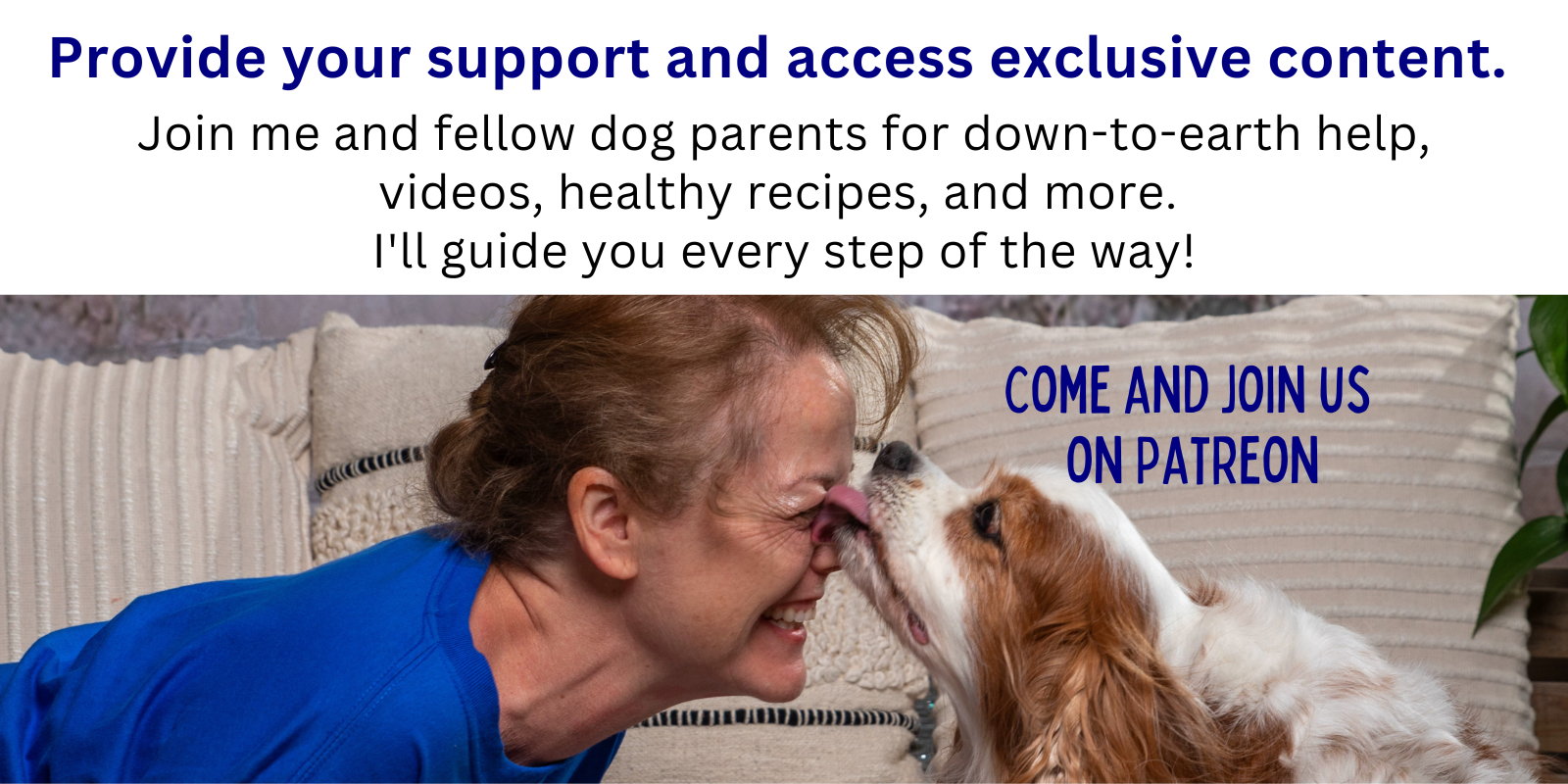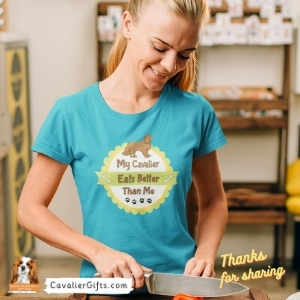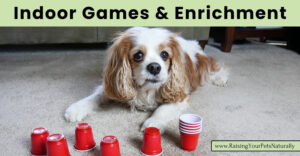Google Adsense—>

My Dog Won’t Eat Out of His Dog Bowl

Does your dog refuse to eat out of his bowl, or maybe he’s a fussy eater? Do you have a dog who doesn’t want to eat out of his dog bowl? Or maybe sometimes your dog eats his food, and other times, he doesn’t eat his food. Today I’m going to discuss some of the reasons why a dog may not eat out of his food. It will require a bit of troubleshooting on your part. These suggestions will only be a few ideas to consider. You may need to dig deeper to find the exact solution for your dog.
Watch on YouTube and don’t forget to subscribe to the channel.
Why Won’t My Dog Eat His Food out of The Bowl?
First things first. If your dog has a change in his behavior, meaning he always ate his food before and, all of a sudden, he’s not eating it, then you will need to dive deep and figure out what’s going on. It may be medical, behavioral or a learned behavior. Or, maybe it has to do with the actual food you are feeding your dog or puppy. Because a dog who normally eats, and, all of a sudden, doesn’t, something is up. That’s not his normal. If you’re feeding your dog a prepared food from the store, do a quick search and make sure his food hasn’t been recalled for any reason.
If Your Dog Won’t Eat out of the Bowl, it May Be Medical.
Then you want to think about your dog’s health. The very first thing I would do is to look inside my dog’s mouth. Evaluate his teeth, gums, and smell his breath. If you see anything unusual in his mouth—maybe his teeth are red, maybe they’re bleeding, or you spot a chipped tooth, or his breath really stinks, then I would definitely take him to the vet and have his teeth checked out. He may need a dental cleaning or an extraction.

If you’ve found no dental problems, is there another medical reason for his behavior? Is your dog acting any differently? Is he hunched over at all? Does he seem a little more lethargic? Did he maybe eat something he wasn’t supposed to? Did he chew up a toy and swallow a piece? If, all of a sudden, your dog isn’t eating, there’s a reason, and you need to figure that out pretty quickly.
My Dog is a Picky Eater
On the other hand, if your dog has always avoided his food dish and won’t eat out of his bowl or always seems to be a picky eater, then you’ll need to consider some other things. So, the first thing is, what’s in the bowl. What are you feeding your dog? If you’re feeding your dog a highly processed dry food, he may not like it. He may actually be getting belly aches from the dry kibble just sitting in his gut, and you don’t even know it. He’s been eating it all his life, sure, but maybe he’s always had a belly ache or even felt a little nauseous from it, or it’s always sitting really heavily inside his stomach.
I obviously support fresh feeding and a species-appropriate diet: a complete balanced raw dog food or a completely balanced home-cooked meal. That’s always my preference. And probably your dog’s preference, too. Because they have those canines for a reason. It’s not to grind kibble. Maybe you’re feeding them a wet food, which is usually better than dry. Still, read that ingredient panel. See what’s actually inside your dog’s food. Is it meat? Is it mostly meat? We have carnivores at our feet. They’re going to appreciate a really meaty diet. So, you might want to reconsider what it is that he’s actually eating.
The next thing to consider: is your dog eating too much? Maybe it’s not so much the food itself but the quantity he’s getting. Check your dog’s weight. Does he have an ideal weight? Looking at a dog’s breed chart and reading the breed average won’t tell you if your dog’s overweight or underweight. Take Dexter, for example. He’s an almost 30-pound Cavalier King Charles Spaniel. The breed standard is 13-18 pounds. Is Dexter fat? Nope. Sometimes, he might be an extra pound or two over his ideal weight, but most of the time, he’s at he’s just right for his length and height.
The way to tell if your dog is at his ideal weight is to look at that waistline. When your dog is standing facing you, take your hands and go from his chest and move them down his body through his waist and hips. When you go down his body, you should be able to feel his ribs with a slight touch. They shouldn’t be squishy, where you’re trying to push down to find those ribs. And they shouldn’t be poking out where you can see every little bone in his body. So, go from his chest and, when you get down to your dog’s waist, there should be a little tuck in that waist. If that’s what you’re getting, then he’s at an ideal weight. On the other hand, if you’re finding that pudge in the rib cage and no dip and pudge during the waist, he might be a little heavy, and he might not be hungry at all. Then I would suggest cutting back on his food calories.
The next thing I evaluate is his eating environment. During feeding time, what’s the environment like? Are there other dogs running around? Is the cat pestering him? Is it noisy? Are the kids by the dog bowl? A lot of dogs will stress out about all that chaos. So, you want to have kind of a zen area where your dog’s eating and nobody’s messing with him. No other dogs are in his face. No cats are over there trying to sneak their way in. No kids are running around his bowl. And you’re not hovering over him, either. Don’t bother him and say things like, Did you eat? Are you eating? Are you eating your food? We want him to be able to eat in peace. So, check out that environment. That might be something that you can change.
Choosing the Right Bowl for Your Dog
Next, let’s take a peek at his bowl. What shape, height and texture is your dog’s bowl? What is the shape of your dog’s head, nose and even ears? Take Dexter and his long ears for example. He wears a snood to hold those ears up so they don’t go in his bowl. The bowl height isn’t very tall because we don’t want him to have to go in deep. If the bowl is too tall, and your dog has to go at a weird angel to eat his food, that just might be a bit too tall for him, and he might be uncomfortable and feel a little claustrophobic in there. Make sure that the bowl isn’t too tall.
Another thing to consider is your dog’s collar and tag, if he wears a collar. I’ve seen a lot of dogs get spooked when they go to eat out of their bowl because their collar tag clanks on it. Your dog goes over to eat, and the dog tag is going clank, clank, clank, clank and then they start to get a little nervous. Think about that collar. And it might be when he eats, you take off his collar so it doesn’t hit the bowl.

Another thing to consider is the bowl and the reflection. For example, stainless steel, although I love stainless steel bowls, stainless steel bowls or aluminum bowls, which I don’t like aluminum bowls, but they can be highly reflective. Your dog is going in to eat and he sees strange reflections of different things around in the house and the lights, and that can spook him. Your dog can get a little uncomfortable about that. A nice matte bowl, sometimes, will do the trick. It might not be a bowl at all. You might start off with something flat.
If your dog is starting to eat, and the bowl is moving around, that can be a little freaky, too, for the dog. We want that bowl to be nice and secure. If that doesn’t work, you can also get a handy-dandy paper plate. That’s always an option. Because sometimes just having something different than the dog’s never touched before can jump start getting your dog getting comfortable eating off of something.
Think about the height of your dog’s bowl and your dog’s body. Ideally, when your dog bends over to eat, he’s going to be at a relatively neutral position, not all the way down to the ground. Choose one that’s going to help the digestion and help prevent bloat because it’s at the best level for your dog. You might have a raised feeder. You don’t want it too high. I’ve seen that as well, where the dog’s trying to get in there, and it’s just too high. We’re shooting for the height where your dog just bends his head down and eats in that nice, comfortable, neutral position. Make sure the height is right for your dog.

How to Train Dogs to Eat From Their Own Bowl
Now that you’ve decided on what bowl you want to try or what plate you want to try and what food you want to try, we can work on reintroducing your dog to eating out of that container. If your dog has been spooked about the location of his feeding, then start this in a different location. If on the other hand, the location really hasn’t been an issue, go ahead and start this at where he’s normally eating.
Take your dog’s new bowl and your food of choice. Go to the location where you plan on feeding your dog. Instead of placing the bowl on the floor, start by hand feeding your dog. If it’s raw dog food, maybe you put a dab on a wooden spoon to give your dog his bites. And then, after a couple of bites, place your dog’s bowl with a little food down on his feeding station and then walk away. And don’t stare at your dog and see what happens. Hopefully, he’ll go ahead and eat it, then you can come back and drop some more food into that bowl then leave again. Hopefully, he’ll eat it.
If that works, you’re going to gradually put more food down in that bowl right away. Instead of three little bites of food, you’re going to go ahead and put half the food in and then walk away. If he eats it, add the remaining food and then leave the room. Don’t stare or pay any attention; just go about your own business. If in 20 minutes, he hasn’t eaten the food, pick it up, wrap it, put it in the refrigerator, and then, after a couple of hours, give it another try. A healthy dog won’t starve himself. Go ahead and try that throughout the day.
If, after 24 hours, your dog still hasn’t eaten, and you’ve gone through the other steps to ensure that his environment is comfortable and safe, he doesn’t feel stressed, he has the right food, he has the right bowl, he’s been health checked by your veterinarian, and we know that we’re good, then I would go ahead and try to introduce a different type of food, maybe a novel protein.
So if you’re feeding him a raw beef diet, try a raw rabbit diet or a cooked beef diet. Give him a different flavor or add some toppers to boost that flavor. Don’t do this after you’ve picked up his food bowl and he refused to eat it. You want to have a clear break between picking up his food, putting it in the refrigerator, and then later offering him a new food. Because you don’t want him to decide to just wait it out
So if you’re going to try a new food or add a topper to your dog’s diet, think about meats… and warmth…. and aroma. These things might get your dog to start eating. If you find your dog is eating this new food or these new toppers, and, for whatever reason, it’s really not something you want to feed your dog, you can slowly transition him to the food you want. .
Over the next two months, start to add a little of your food choice to the food he’s eating. In order to keep with the same calories, you will need to reduce some of the current food. You can read more on how to transition your dog in this article.
If your dog has resource guarding, please seek a professional dog trainer to help you work through that issue. Don’t try solving that serious behavioral problem alone. Hopefully, you found these tips helpful. And don’t forget to go through those steps. It is important for dogs to have a nice zen lifestyle. If that eating area is stressful, that’s the very first thing to change. And be friends with your dog’s veterinarian. You want to make sure his health is in tip-top shape. And if not, it’s something that you’re addressing.
Your questions or comments are welcome below.
Are you looking for even more ways to stay up to date with Raising Your Pets Naturally? Sign up for the newsletter for more tips and promotions. Don’t forget to be social and Like, Follow and Subscribe.
Facebook Twitter Pinterest Instagram YouTube
 |

Google Adsense—>





